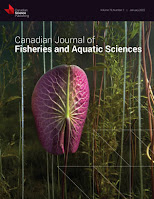Brown NEM, Therriault TW. 2022. The hidden risk of keystone invaders in Canada: a case study using non-indigenous crayfish. Canadian Journal of Fisheries and Aquatic Sciences 79(9): 1479-1496. https://doi.org/10.1139/cjfas-2021-0245
Abstract
Invasive species have long been recognized as a serious threat to freshwater ecosystems. This is especially true for invasive species in keystone positions in food webs that can cause major disruption and can lead to unexpected outcomes. Crayfish occupy a central trophic position and non-indigenous crayfish have been shown to substantially disrupt ecosystems they invade. Here, we assess eight non-indigenous crayfish to 21 freshwater ecoregions in Canada using a screening-level risk assessment. We found that ecoregions in Canada that were warmer and contained high native freshwater diversity were most at risk from crayfish invasions, particularly: the Laurentian Great Lakes, St. Lawrence, English-Winnipeg Lakes and Coastal British Columbia ecoregions. Four crayfish species consistently had higher scores: rusty (Faxonius rusticus), virile (Faxonius virilis), signal (Pacifastacus leniusculus), and red swamp (Procambarus clarkii). Of these high-risk crayfish, only the red swamp crayfish is not yet established in Canada but is present in US waters of the transboundary Great Lakes ecoregion. Our study is the first to evaluate the relative risks that non-indigenous crayfish pose to freshwater ecosystems in Canada.
Keywords: None provided.




No comments:
Post a Comment